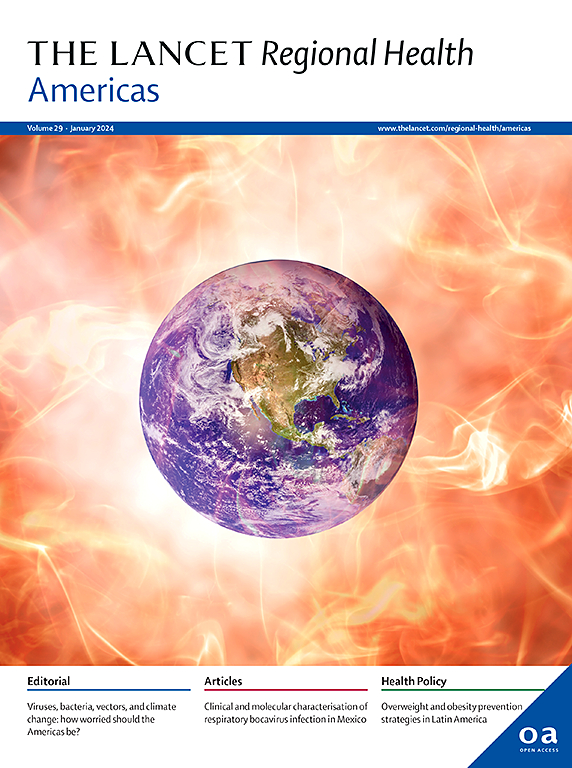Antimicrobial utilisation patterns between 2013 and 2022 in Canadian neonates born at less than 33 weeks gestation: a retrospective cohort study
IF 7
Q1 HEALTH CARE SCIENCES & SERVICES
引用次数: 0
Abstract
Background
Excessive antimicrobial exposure is associated with an increase in neonatal mortality, morbidities and adverse neurodevelopment. Canadian Neonatal Network has been promoting judicious antimicrobial use through the Evidence-based Practice for Improving Quality processes. Our objective was to evaluate the antimicrobial consumption among neonates in tertiary neonatal intensive care units (NICU) in Canada in the recent decade.
Methods
This is a retrospective cohort study including data from very preterm infants (born at <33 weeks gestational age) admitted to all NICUs in Canada between January 1, 2013, and December 31, 2022. Nationwide antimicrobial utilization rate (AUR) benchmarking started in 2016, and quality improvement initiatives were continued in the subsequent years to promote judicious use of antimicrobials across the network. AUR is defined as the number of days with ≥1 antimicrobial divided by the total patient days (PD). Culture-proven sepsis refers to a neonate with positive culture of pathogens in blood and/or cerebrospinal fluid. The outcomes were evaluated during pre- (2013–2017) and post-intervention periods (2018–2022). Interrupted time-series analysis was used, and comparison of AUR calculated per each 3-month time block and the slope changes were conducted across the pre- and post-intervention periods regarding total patients and subgroups.
Findings
A total of 41,253 infants were included, with 22,644 (55%) being male. The AUR was significantly lower among infants from the post- vs. those from the pre-intervention periods (152 vs. 184, p < 0.0001). Among 35,670 infants without culture-proven sepsis or necrotizing enterocolitis ≥ Stage 2, AUR was significantly lower in the post-intervention group vs. the pre-intervention group (110 vs. 136, p < 0.0001). Interrupted time-series showed significant reduction in AUR during both pre- and post-intervention periods among all infants with and without culture proven sepsis or necrotizing enterocolitis ≥ Stage 2 (all p < 0.0001), as well as those born at <29 weeks gestational age.
Interpretation
A comprehensive, network-wide quality improvement initiatives led to a significant and sustained reduction in antimicrobial use among preterm infants born at <33 weeks gestational age with and without culture-proven sepsis or necrotizing enterocolitis ≥ Stage 2.
Funding
This study was supported by the Canadian Institutes of Health Research Project Grant 2019 (201903PJT-420294-CA2-CAAA-245530), matched funding from the British Columbia Women's Health Foundation and start-up funding from the Women and Children's Health Research Institute, University of Alberta. The coordinating center in Toronto is funded by the Canadian Institutes of Health Research grant for the Canadian Preterm Birth Network (PBN 150642).
2013 年至 2022 年期间加拿大妊娠不足 33 周新生儿的抗菌药物使用模式:一项回顾性队列研究
背景过度接触抗菌药物与新生儿死亡率、发病率和不良神经发育的增加有关。加拿大新生儿网络(Canadian Neonatal Network)一直在通过 "改善质量的循证实践"(Evidence-based Practice for Improving Quality processes)促进抗菌药物的合理使用。我们的目的是评估近十年来加拿大三级新生儿重症监护病房(NICU)中新生儿的抗菌药物消耗情况。方法这是一项回顾性队列研究,包括2013年1月1日至2022年12月31日期间加拿大所有新生儿重症监护病房收治的极早产儿(胎龄33周时出生)的数据。全国范围内的抗菌药物使用率(AUR)基准测试始于 2016 年,随后几年继续开展质量改进活动,以促进整个网络合理使用抗菌药物。AUR 的定义是使用≥1 种抗菌药物的天数除以患者总天数(PD)。培养证实的败血症是指血液和/或脑脊液中病原体培养呈阳性的新生儿。对干预前(2013-2017 年)和干预后(2018-2022 年)的结果进行了评估。采用间断时间序列分析法,比较了干预前和干预后每个 3 个月时间块计算的 AUR 以及患者总数和亚组的斜率变化。与干预前相比,干预后婴儿的AUR明显降低(152 vs. 184, p < 0.0001)。在 35,670 名没有经培养证实的败血症或坏死性小肠结肠炎≥第二阶段的婴儿中,干预后组的 AUR 明显低于干预前组(110 vs. 136,p < 0.0001)。间断时间序列显示,在干预前和干预后,所有经培养证实患有或未患有败血症或坏死性小肠结肠炎≥第 2 阶段的婴儿以及胎龄为 29 周的婴儿的 AUR 均明显下降(均为 p<0.0001)。释义 一项全面的、全网范围的质量改进措施使胎龄 33 周的早产儿中,无论是否有经培养证实的败血症或坏死性小肠结肠炎≥第 2 阶段,抗菌药物的使用量都有了显著而持续的减少。资金来源本研究得到了加拿大卫生研究院2019年项目资助(201903PJT-420294-CA2-CAAA-245530)、不列颠哥伦比亚省妇女健康基金会的对等资助以及阿尔伯塔大学妇女儿童健康研究所的启动资金的支持。多伦多的协调中心由加拿大卫生研究院为加拿大早产儿网络(PBN 150642)提供资助。
本文章由计算机程序翻译,如有差异,请以英文原文为准。
求助全文
约1分钟内获得全文
求助全文
来源期刊

Lancet Regional Health-Americas
Multiple-
CiteScore
8.00
自引率
0.00%
发文量
0
期刊介绍:
The Lancet Regional Health – Americas, an open-access journal, contributes to The Lancet's global initiative by focusing on health-care quality and access in the Americas. It aims to advance clinical practice and health policy in the region, promoting better health outcomes. The journal publishes high-quality original research advocating change or shedding light on clinical practice and health policy. It welcomes submissions on various regional health topics, including infectious diseases, non-communicable diseases, child and adolescent health, maternal and reproductive health, emergency care, health policy, and health equity.
 求助内容:
求助内容: 应助结果提醒方式:
应助结果提醒方式:


